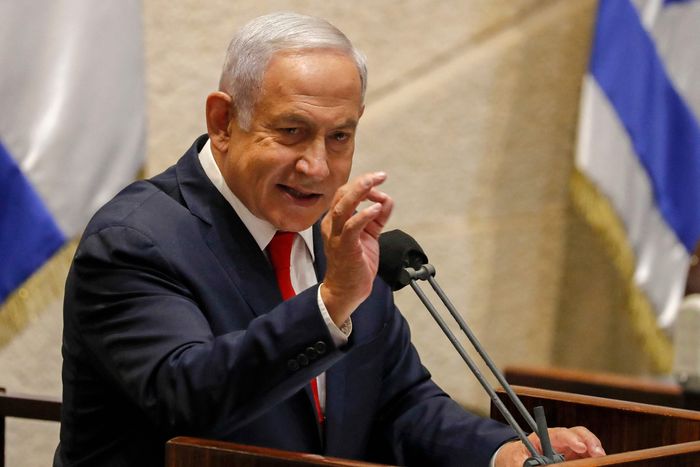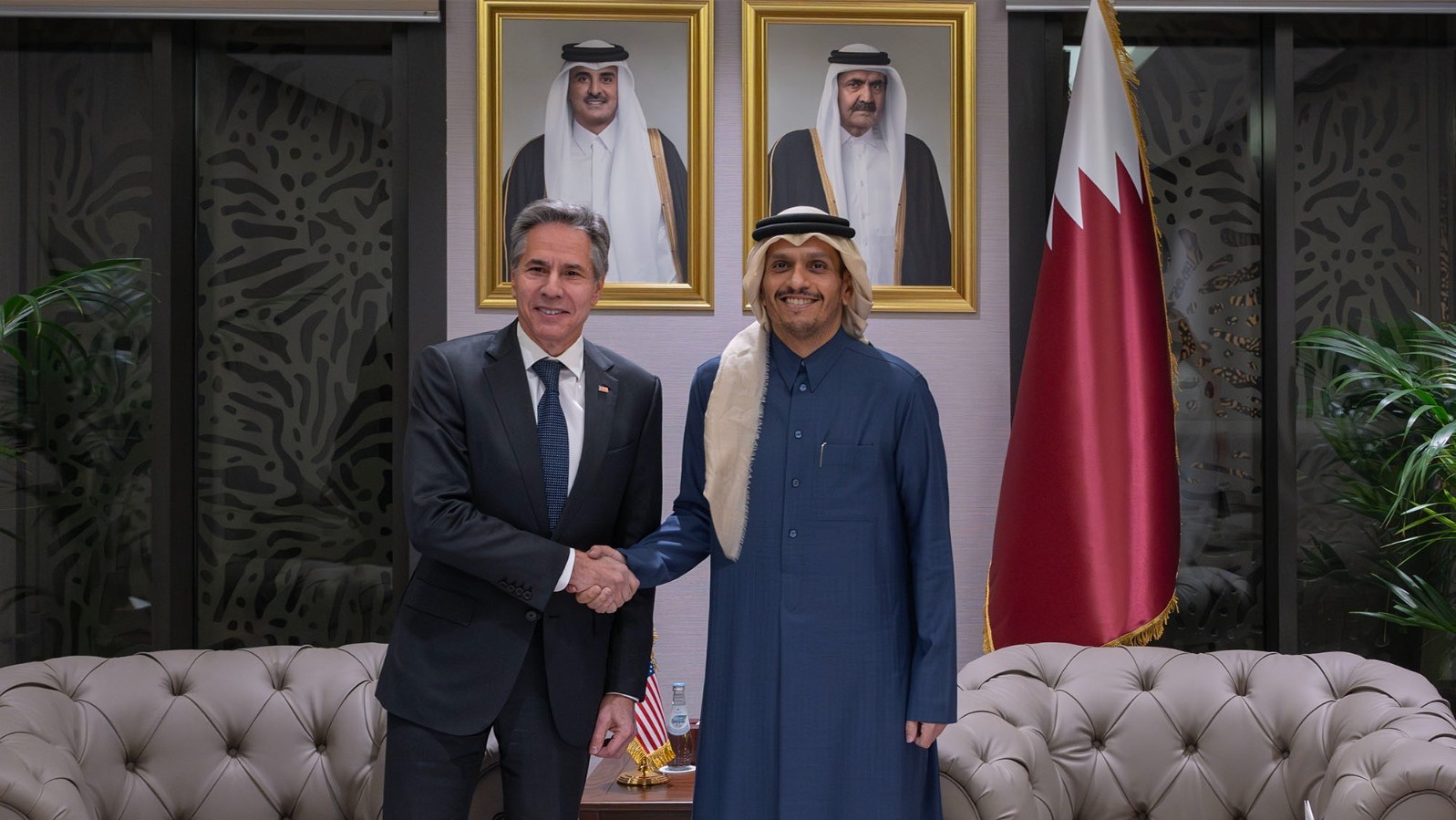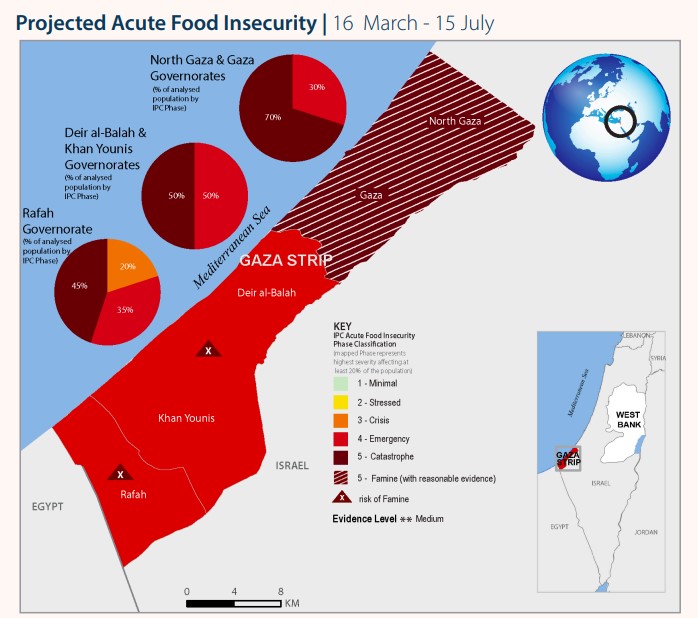Qatar’s Prime Minister, Sheikh Mohammed bin Abdul Rahman Al Thani, has announced the nation is reconsidering its role as a mediator for Gaza ceasefire negotiations. Qatar has been central to negotiation processes, and their withdrawal would mark a significant hit for negotiations that already suffer greatly.
“Narrow Political Interest”
In a joint press conference with Turkey’s Foreign Minister, Qatari PM Sheikh Mohammed, who additionally serves as Qatar’s Foreign Minister, announced that Qatar was reconsidering its role as a mediator for the Gaza war after claiming certain parties had used ongoing ceasefire talks in Doha, Qatar, for “narrow political interest.”
PM Sheikh Mohammed’s words come after Qatar had claimed that negotiations, which were in a “delicate phase,” had hit a “stumbling block.” He further added that negotiators were still trying to “move forward and put an end to the suffering that the people in Gaza are experiencing and return the hostages.”
This round of negotiations in Doha are taking place after negotiations in Cairo failed to produce a ceasefire. Israel proposed a six week long, three phased ceasefire that would see Hamas free 40 hostages in the first phase. Those who would be released in the first round are elderly, sick, women, or children.
However, Hamas rejected this ceasefire proposal, remaining insistent upon a ceasefire that is permanent, and comes with a full Israeli withdrawal from the Gaza Strip. These two absolutes for Hamas have been continually rejected by Israel, who has been insistent that any ceasefire is temporary, and refuses to withdraw its troops from Gaza in completion.
As a consistent and publicly stated war goal, Israel has stated that the war will not conclude until Hamas is destroyed, creating an obvious impasse in any negotiations between the two sides.

Qatar has been particularly important in ceasefire negotiations due to their close relationship with Hamas. Qatar has assisted Hamas financially in the past, and additionally has offered them notable political support. Presently, Ismail Haniyeh, the head of Hamas, resides in Doha, and has since 2016.
A Qatari withdrawal from negotiations would mark a significant hit as Qatar has been the primary conveyor of Hamas’ wishes. If they withdraw, negotiations would likely continually align with Israel’s interests, in such a manner that would continue to prove unacceptable to Hamas. As such, it is likely negotiations would continue to be unsuccessful should Qatar withdraw as a mediator.
Qatar, while not holding official ties with Israel, has close ties with the US, making them a good nation to be involved in negotiations as a mediator.
PM Sheikh Mohammed did not identify which side, or any individuals, that were using negotiations for their own political interests.
“Unfortunately, I mean, we have seen that there has been an abuse of this mediation and an abuse of this mediation in favour of narrow political interests. This means that the state of Qatar has called for a comprehensive evaluation of this role. We are now at this stage to evaluate mediation and also evaluate how the parties engage in this mediation” -Qatari Prime Minister Sheikh Mohammed bin Abdul Rahman Al Thani

In turn, the US has blamed Hamas for being “the obstacle to a ceasefire,” and some US politicians have accused Qatar of not applying enough pressure on Hamas.
Israel has additionally accused Hamas of not properly ascribing to negotiations, with the Mossad claiming that Hamas “does not want a humanitarian deal and the return of the hostages, is continuing to exploit the tension with Iran, and is striving to unite the sectors and achieve a general escalation in the region.”
Increasing Tensions
Continually stalled negotiations come as there have been a series of escalations in the region during the last several days. Iran’s strikes on Israel, in retaliation for Israel’s strike on Iran’s embassy in Damascus, Syria, represented a significant escalation in the region. The strikes prompted an emergency meeting of the UN Security Council, and were followed by vows from Israel to retaliate.
Yesterday, on April 17th, continued clashes between Israel and Hezbollah resulted in significant IDF casualties. Hezbollah launched an attack upon Arab al-Aramshe in northern Israel. Notably, the first strike from Hezbollah’s attack took place before any alarm systems had become active.
According to the IDF, 14 Israeli soldiers were injured, six of whom were critically injured. The IDF responded less than an hour later with strikes of their own in Lebanon.
Additionally spoken about by PM Sheikh Mohammed was the escalating tensions in the region. The PM stated that Qatar “warned from the beginning of this war against the expansion of the circle of conflict, and today we see conflicts on different fronts.”
“We constantly call on the international community to assume its responsibilities and stop this war” -Qatari Prime Minister Sheikh Mohammed bin Abdul Rahman Al Thani
Multiple nations and international entities have called for a de-escalation of the whole situation as the threat of a regional spillover continues to grow.
Famine Setting In
Despite ceasefire negotiations having stalled, there is more pressure on both sides than ever to come to a deal.
On the Israeli side, Netanyahu is facing distinct domestic pressure in order to rescue the remaining hostages from Gaza. Israel estimates there are 133 hostages that still remain within Gaza, of which 30 are already dead. Hamas several weeks ago announced the death of another hostage, 34 year old Yigev Bukhatab, “due to a lack of medicine and food.”
Hamas video announcing the death of an Israeli hostage “due to a lack of medicine and food” pic.twitter.com/Ctamplh4PO
— GHMV2 (@GHMV2Research) March 23, 2024
An Israeli official recently stated to US media that Hamas had signalled they did not have 40 living hostages to fulfill the prerequisites for hostages to be released in the first round of Israel’s proposed ceasefire. Those being the elderly, sick, women, or children.
While this could mean many things, it has led to fears among many that more hostages are dead than have been publicly admitted.
On Hamas’ side, Gaza’s situation is becoming increasingly dire.
The Integrated Food and Security Phase Classification (IPC) has projected that, within northern Gaza, famine is imminent and expected to begin some time between now and May. The northern half of Gaza is projected to be experiencing IPC level five, “Famine with reasonable evidence,” whereas the south of Gaza is experiencing IPC level four, emergency levels of hunger, with the majority of the south having been determined to be at risk of famine.
In order to address these pressing issues, and the demands of the US, Israel had reportedly opened an additional aid entry point in the north of Gaza last week, and additionally has began processing small amounts of aid in Ashdod, which lies just south of Tel Aviv.
The Israeli Prime Minister’s office released a statement saying that Israel “rejected the claims of international organisations regarding famine in Gaza,” further claiming that Israel was “going above and beyond in the humanitarian sphere.”
In partial agreeance with the Israeli PM’s office, is US President Joe Biden. Yesterday President Biden claimed that “in the 12 days following my call with Prime Minister Netanyahu, 3,000 trucks with food and supplies moved into Gaza – a daily increase of over 50% from the week prior.” This 3,000 trucks within 12 days would be an average of 250 per day. This number would still fall far short of what is required for Gaza’s humanitarian aid needs, but would be a significant step forward in the right direction.
In the 12 days following my call with Prime Minister Netanyahu, 3,000 trucks with food and supplies moved into Gaza – a daily increase of over 50% from the week prior.
It's still not enough.
We continue to urge Israel to ramp up land, air, and sea deliveries for Gaza civilians.
— President Biden (@POTUS) April 17, 2024
However, in disagreement with President Biden and with Israel, is the UN. According to a UNRWA report released on April 16th, the average amount of trucks entering Gaza was 181 trucks per day. From the 5th of April (the day following Biden and Netanyahu’s phone call), until the 15th of April (when the latest data was available), this average went up to just 185 trucks per day. This is, of course, far below the average claimed by President Biden.
The UNRWA explicitly stated in their report that “there has been no significant change in the volume of humanitarian supplies entering Gaza or improved access to the north,” directly contrasting the Israeli and American claims that Israel has expanded aid.
Additionally in the UNRWA’s report was details on operational issues being faced in Khan Younis, in the southern Gaza Strip. The IDF completed its withdrawal from the city on April 11th, following which several UN agencies carried out an “inter-agency assessment mission” in order to determine the feasibility of humanitarian operations there.
They claimed that “thousands” of people were in need of assistance in the city, but that the safe delivery of aid was complicated and made unsafe by “the presence of unexploded ordnance (UXOs), including 1,000-pound bombs inside schools and on roads.” The UNRWA’s report made no mention on if there was a plan to safely remove any UXOs.
The Israeli government agency ‘Coordination of Government Activities in the Territories: Judea and Samaria and towards the Gaza Strip’, shortened to COGAT, has denied issues in delivering aid, denied the IPC’s reports of famine, and additionally blamed the UN for falling short in aid delivery.
COGAT released a statement on twitter showing what they claimed to be “the content of 700 aid trucks” on the Gazan side of the Kerem Shalom crossing, which lies in the southern Gaza Strip. Along with the footage of the aid, which they said was waiting for the UN to pick it up, COGAT claimed that “We scaled up our capabilities. All the UN did was make up excuses.”
This is what the content of 700 aid trucks looks like.
It is waiting on the Gazan side of Kerem Shalom to be picked up by @UN agencies.We scaled up our capabilities.
All the UN did was make up excuses.Aid needs to be collected and delivered. The UN needs to do its job. pic.twitter.com/a3JYkdvghH
— COGAT (@cogatonline) April 17, 2024
The UN has consistently claimed that Israel is limiting the amount of aid able to be received into Gaza. They state that Israel does this through multiple different means. Namely, through rigorous inspections of aid entering the strip (inspections that the UN, and others, claim are oftentimes arbitrary and unneeded), issues coordinating with Israel on aid deliveries (a necessity in many cases for security reasons), as well as not allowing the UN to replace a number of vehicles that they have lost throughout the course of the war, which decreases their ability to transfer aid.
UN Secretary General, Antonio Guterres, also recently claimed that Israel was only approving 60% of the UN’s request for aid trucks entering Gaza.
Conditions are worst in the north. While much of Gaza’s population has moved south since the war’s beginning, there still remains several hundred thousand people in the north. The UNRWA, who carries out the vast majority of humanitarian operations in Gaza, has been unable to deliver aid to the north since January 23rd. As such, the north is entirely dependent upon Israeli aid, often through COGAT, as well as airdrops from several different countries.
An impending Israeli invasion of Rafah, a city which lies on the Gaza/Egypt border, is likely to make matters far worse.
Rafah was previously established by Israel to be one of the safe areas within Gaza to which civilians evacuating from the north could go. As such, it has become host to approximately 1.4 million people, more than half of Gaza’s 2.3 million population. Rafah has been the primary entry point for aid entering Gaza.
Many fear that an Israeli operation in Rafah would be immensely costly in civilian lives due to the large amount of civilians residing there. On top of this, it would pose significant challenges to humanitarian operations in Gaza due to the importance that Rafah plays in humanitarian operations. UN Secretary General Antonio Guterres has said that an operation in Rafah would be the “nail in the coffin” for humanitarian operations that already face extensive challenges within Gaza.
Netanyahu has been insistent, however, that an operation in Rafah is necessary to completely defeat Hamas. Israel claims that Rafah is host to an extensive tunnel network, host to large amounts of Hamas militants as well as the remainder of the Israeli hostages still held by Hamas.
The US and Israel have continually clashed over the issue, with the US having on multiple occasions publicly declared their opposition to such an operation. In a visit to Israel last month, US Secretary of State Antony Blinken warned that the operation posed too great a risk to civilians, and risked isolating Israel completely on the world stage, more so than they have been already.

Netanyahu has said that the operation will carry on with or without the US’ support. He has claimed that Israel recognizes the threat posed to civilian populations, and that Israel has a plan to evacuate civilians and address the humanitarian issues that would arise.
What is unknown, however, is where exactly civilians would evacuate to. The Israeli and Egyptian borders remain closed, and strikes continue throughout much of Gaza, leaving very few areas of Gaza safe.
Recently, Netanyahu had stated that he had “set a date” for the Rafah operation, although gave no clue as to when that would be. It is unclear if the recent developments with Iran and Hezbollah have altered this date at all.
Meanings of the IPC, and Data from Gaza
As previously stated, the IPC has put northern Gaza at IPC level five, “Famine with reasonable evidence.” But just what does this mean..?

The IPC has five different levels to detail hunger issues facing a region. They are:
- None/Minimal
- Stressed
- Crisis
- Emergency
- Catastrophe/Famine
All of Gaza has now entered at least IPC level four, with the majority of the north being under the famine portion of IPC level five.
Regarding IPC ratings for famine, there are two types of famine rating, a famine with solid evidence and a famine with reasonable evidence, and several qualifiers for a hunger rating to get there.
According to the IPC, “IPC Phase 5 (Catastrophe) can only be classified at household
level, not at area level. An area might have some households in IPC Phase 5
(Catastrophe) linked to very high levels acute food insecurity. However, an
entire area can only be classified in IPC Phase 5 (Famine) if this high level of
acute food insecurity is accompanied by certain levels of acute malnutrition
and mortality.”
In order for an area to be regarded as under famine according to the IPC, there must be clear evidence that two out of three qualifiers have been reached, and that analysts can “reasonably assess from the broader evidence that the threshold from the third
outcome has likely been reached.”
The three qualifiers are:
- At least 20% of households are facing an extreme lack of food,
- At least 30% of children are suffering from acute malnutrition, and
- At least two children or four adults are dying from hunger per day, per 10,000 people
A famine with reasonable evidence is declared when an area has clear evidence that it meets two of the three of these qualifiers, and that a reasonable assessment can be arrived at that the third qualifier has likely also been reached.
A famine with solid evidence is declared when there is clear evidence that all three qualifiers have been reached.
Within the areas of Khan Younis and Rafah, the IPC has projected there is a risk of famine. They define that the risk of famine:
- refers to a reasonable probability of an area going into Famine in the projected period. While this is not perceived necessarily as the most-likely scenario, it is a scenario that, generally speaking, has a realistic chance of occurring.
- complements the Famine projections of the most likely scenario by providing insights into potential Famine if prospects evolve in a worse manner than anticipated.
- differs from Famine projections because it focuses on a worst-case scenario that has a reasonable and realistic chance of happening.
- is a statement about the potential deterioration of the situation from what is expected. It is not a new classification, and it is not to be accompanied by population estimates.
- is an additional assessment that focuses on assessing if the area could realistically go into Famine during the projected period. Not all areas need to undergo assessment for risk of Famine.
Regarding famine within northern Gaza, the IPC stated it’s findings:
: (i) Famine thresholds for acute food insecurity have already been surpassed; (ii) Famine thresholds for acute malnutrition (Extremely Critical) have likely already been surpassed; (iii) It is likely that these extreme levels of malnutrition have not yet translated into a Crude Death Rate above 2/10,000/day. The likelihood of having surpassed Under-Five Death Rate thresholds (4/10,000/day for children) is higher but impossible to ascertain. For the projected period, the FRC projects that famine is imminent in the North Gaza and Gaza Governorates and is expected to become manifest between mid-March and May 2024. The Famine threshold for household acute food insecurity has already been far exceeded and the steeply increasing trend in malnutrition data indicates that it is highly likely that the Famine threshold for acute malnutrition has also been exceeded. The FRC expects the upward trend in non-trauma mortality to accelerate and for all Famine thresholds to be passed imminently.
In short, the IPC believes that two of the three qualifiers for famine will be reached within the projected period of March to May, 2024.
The Near Future
As ceasefire negotiations continue to break down, regional tensions continue to escalate, and the situation within Gaza continues to deteriorate, it seems more and more likely that Gaza is headed for a certain humanitarian catastrophe, one that is worse than what they are already experiencing.
Gaza’s fatalities, as reported by the Gazan Ministry of Health, has now reached 33,970 as of April 18th.
The hunger situation within Gaza is likely to continue unless a ceasefire is reached, or unless aid is drastically increased, neither of which seem likely at this point in time.


